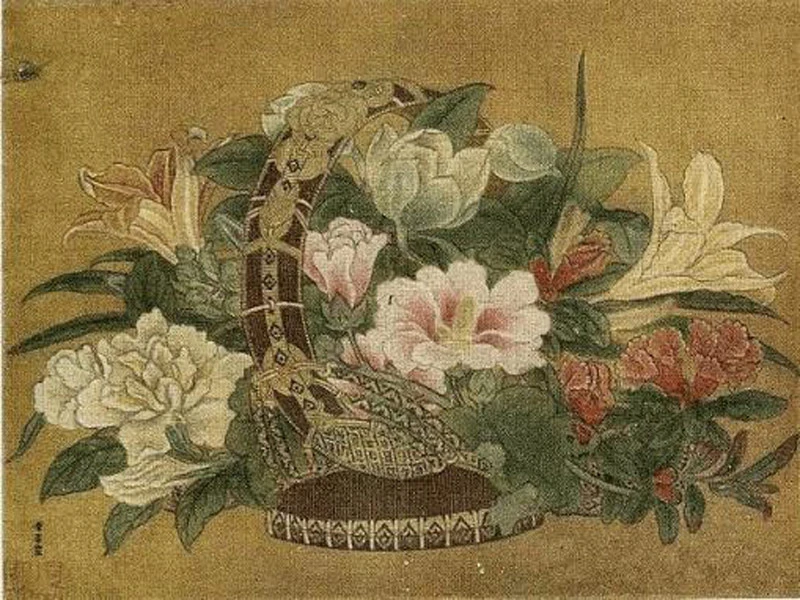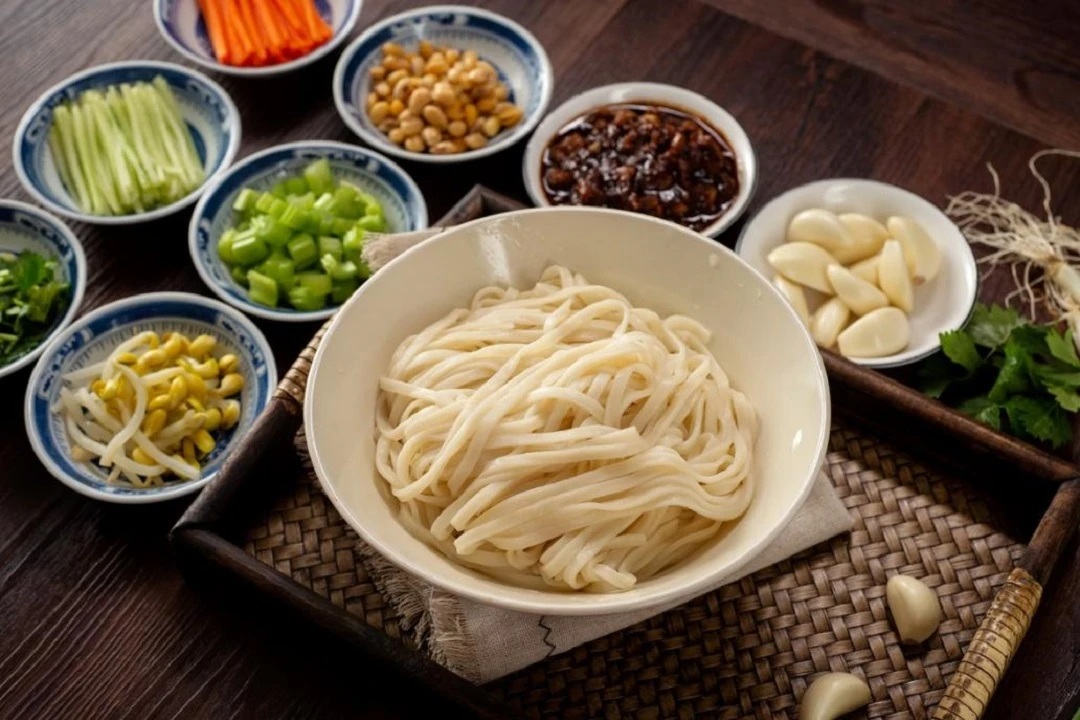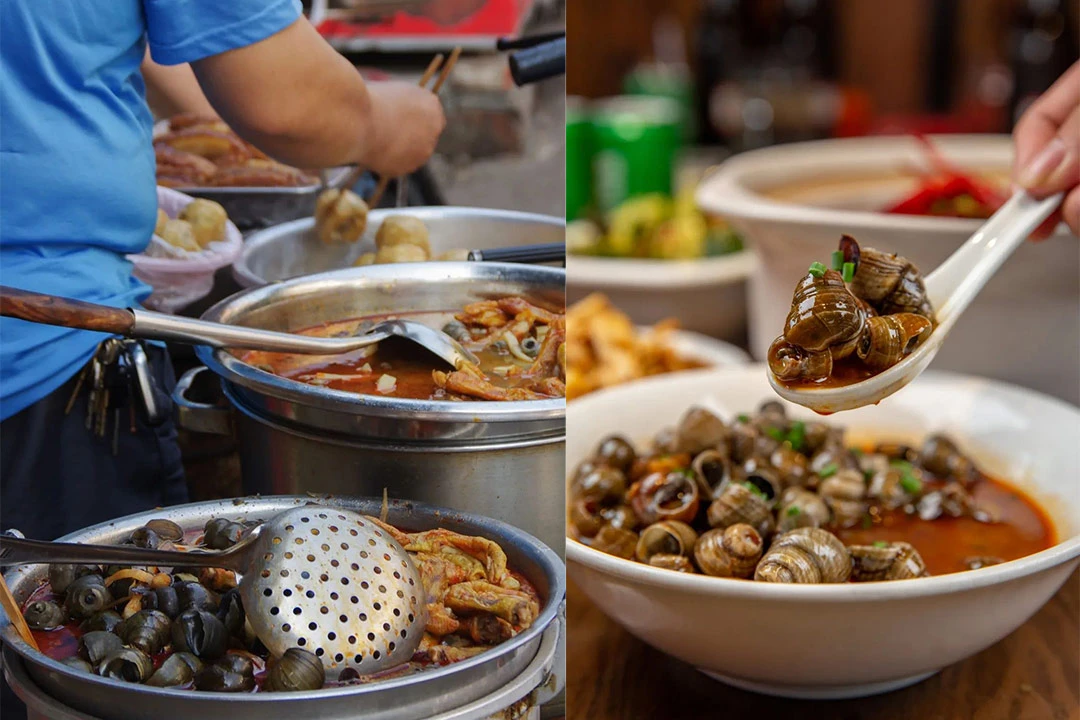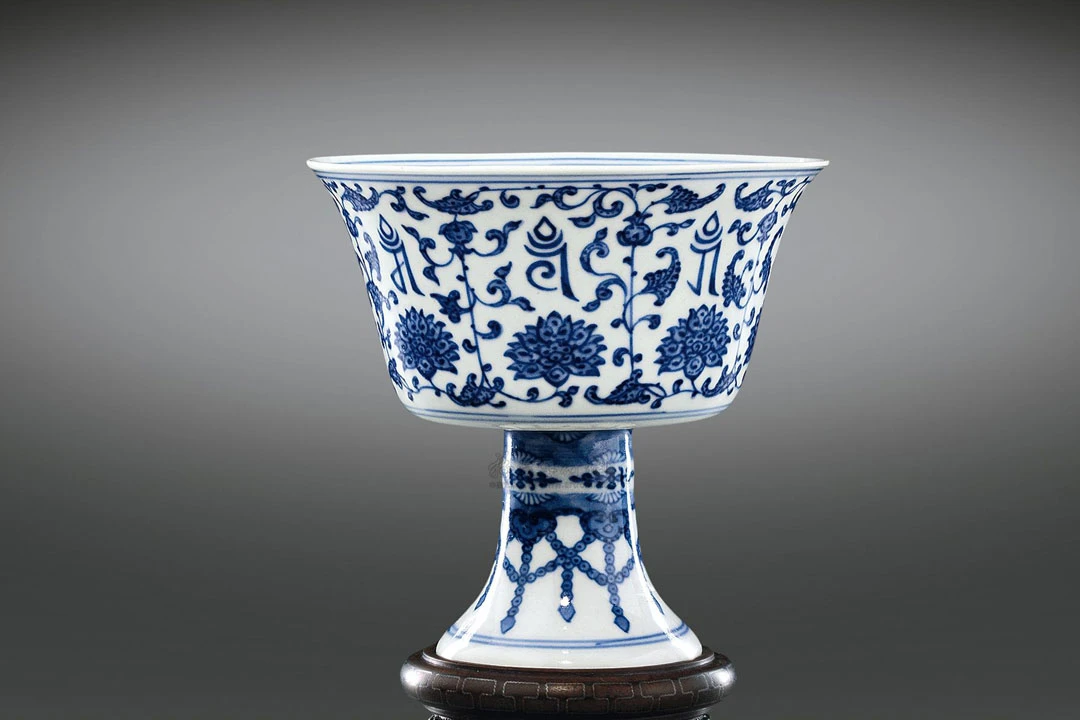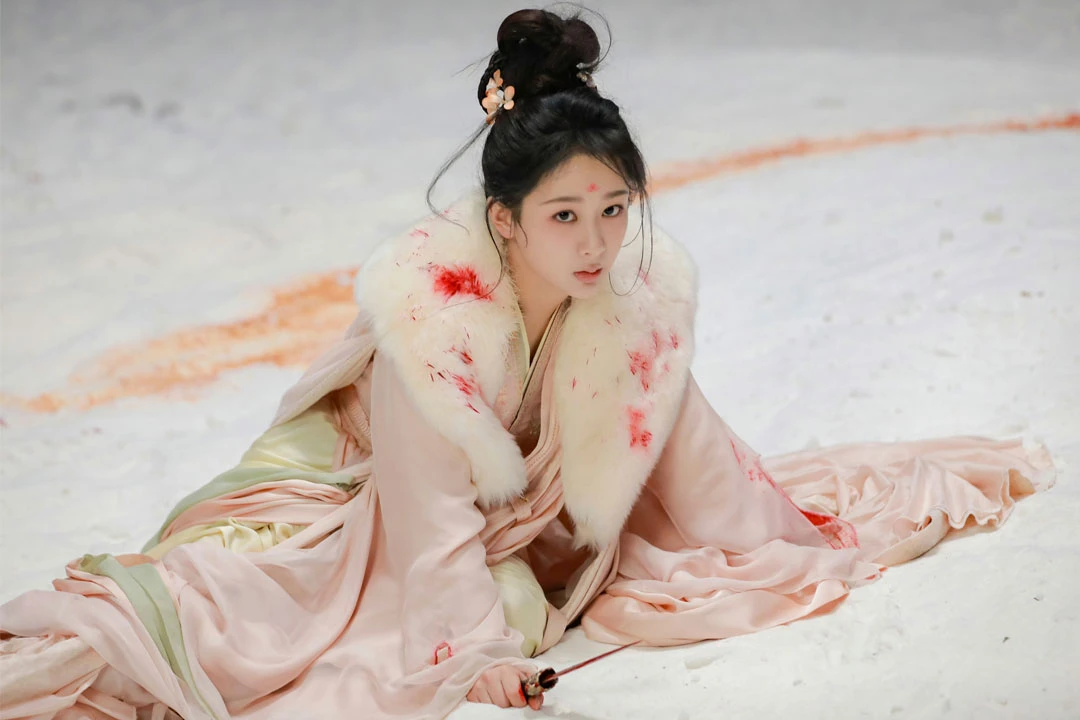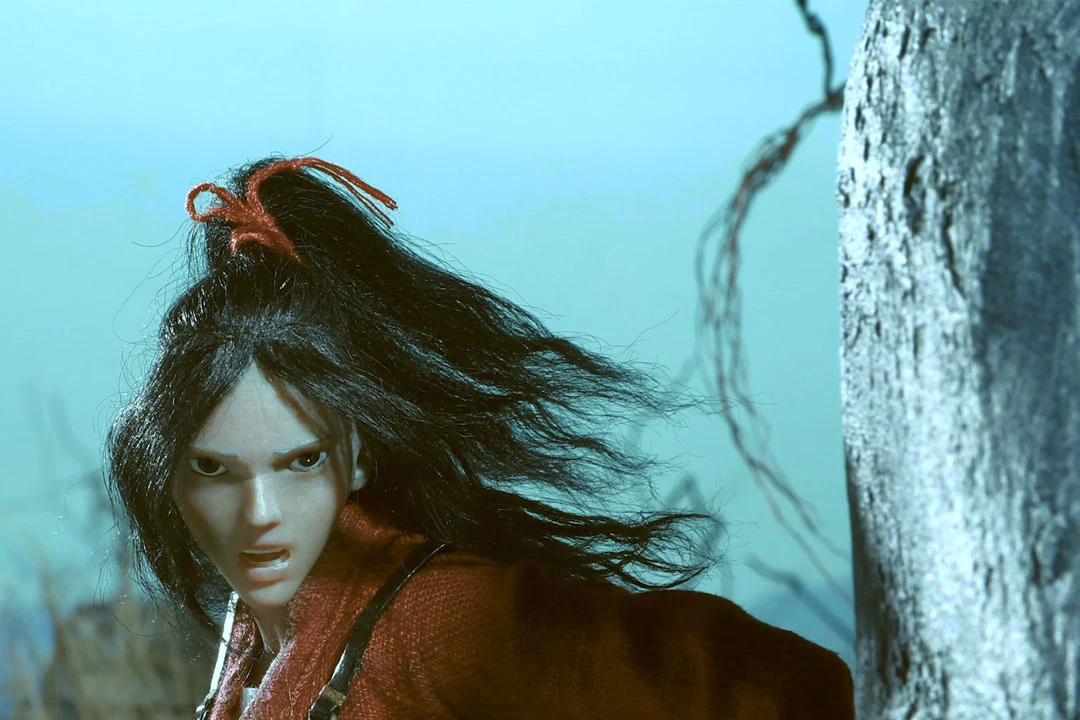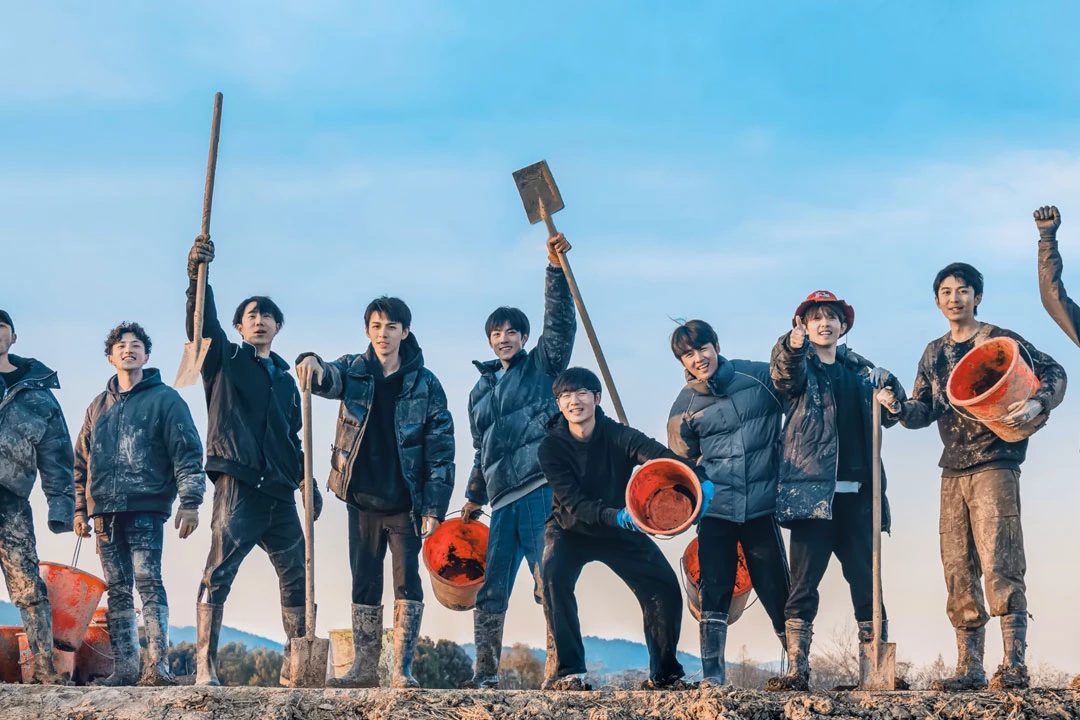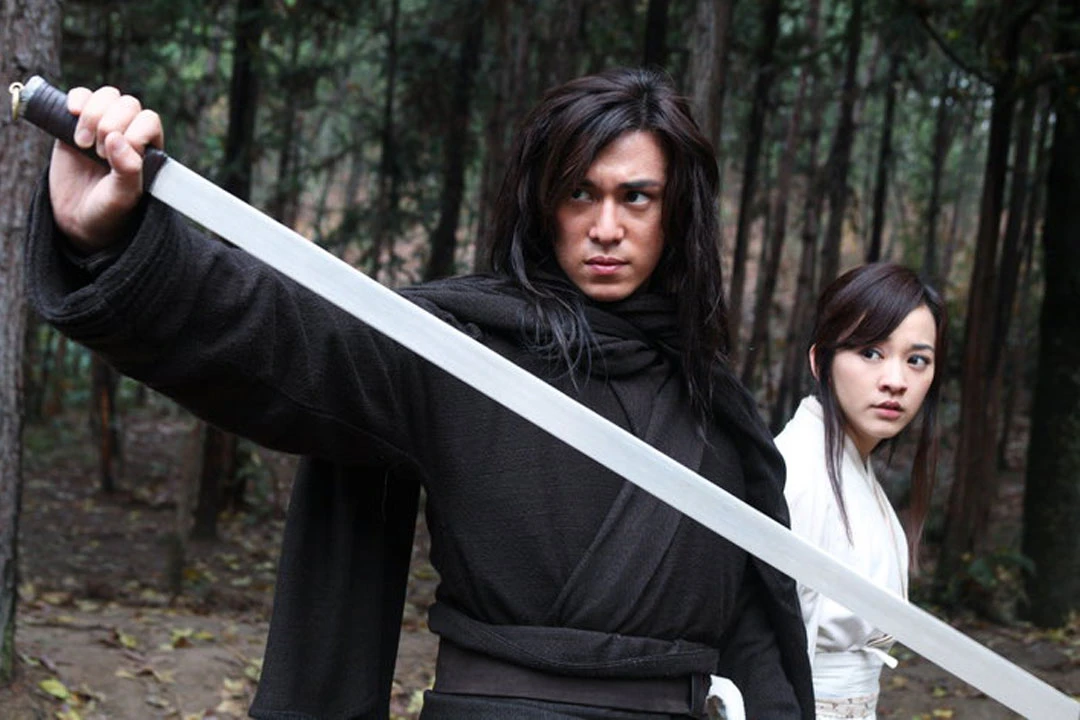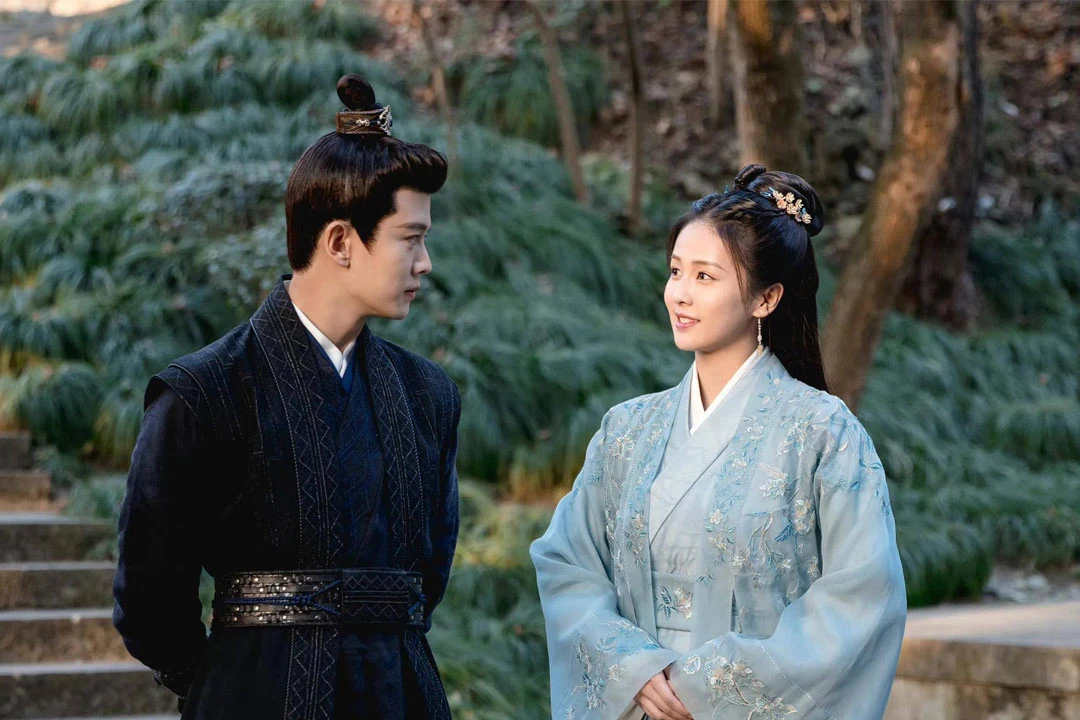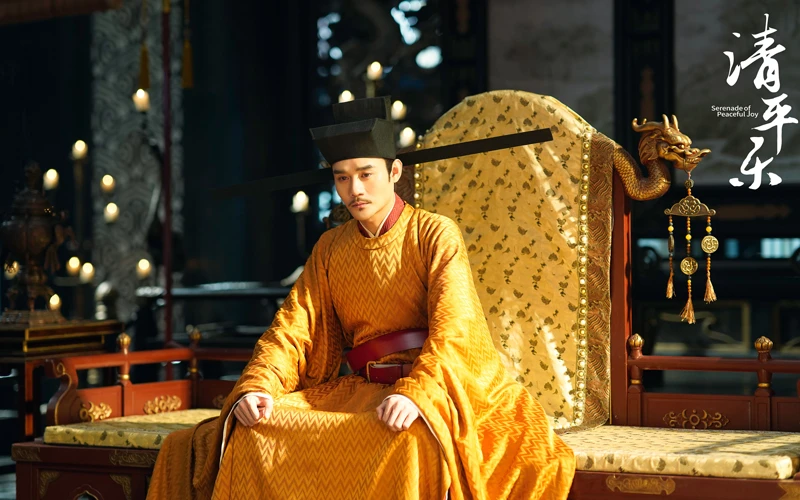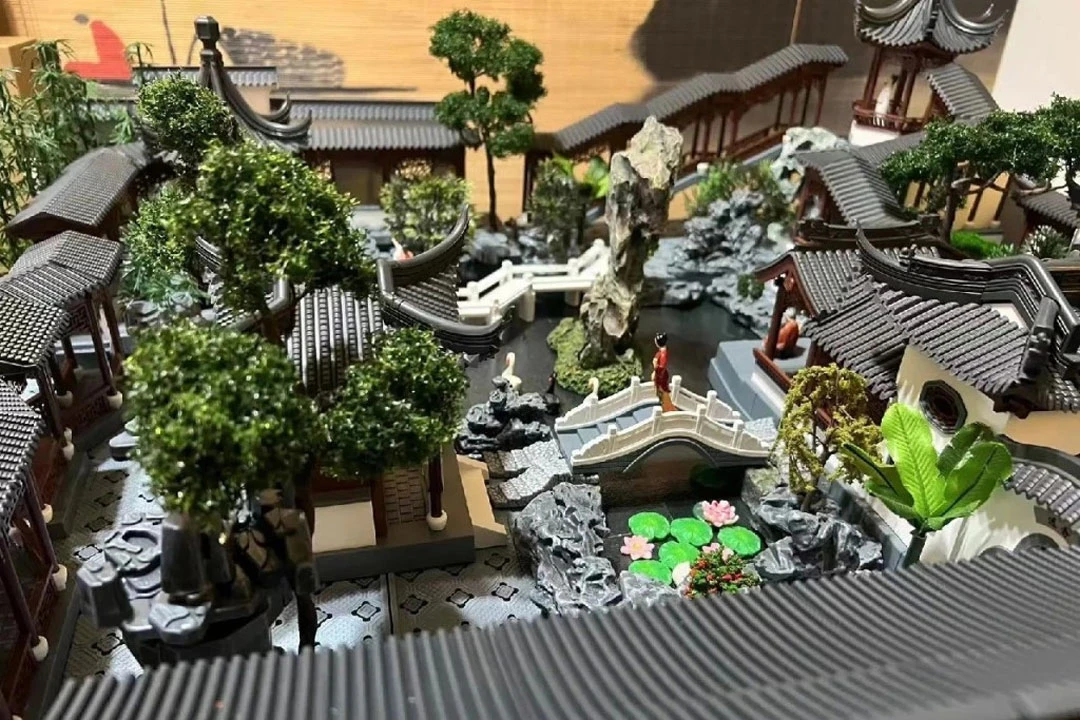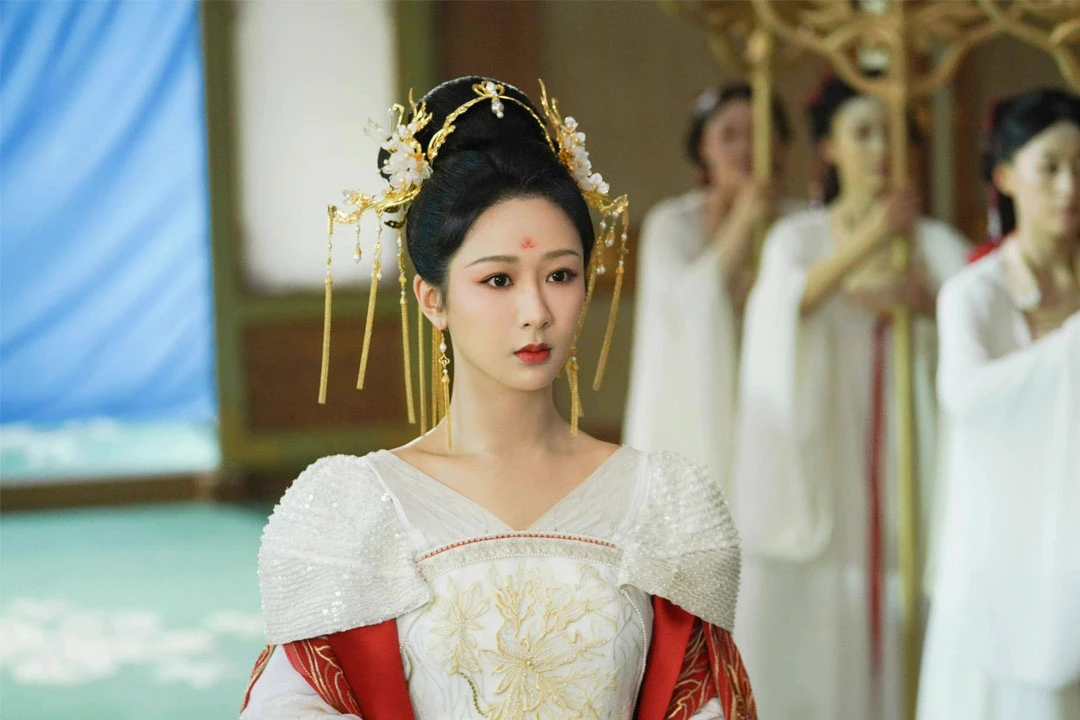Article
搜索结果:
-
Culinary Delights of Xi'an: A Journey Through Northern China's Food Paradise
When it comes to Chinese street food, a Beijing friend once said, "If Xi'an ranks second, no one in the North dares to claim first." This high praise piqued my curiosity, especially as a Southerner, where I worried that Xi'an's cuisine might be all about heavy, carb-loaded dishes. However, my visit to this ancient city, the capital of 13 dynasties, revealed a delightful blend of agricultural and nomadic influences that shaped its diverse culinary DNA. A Meat Lover's Dream: The Best of Xi'an's Carnivorous Offerings Xi'an is a haven for meat lovers, offering a variety of options that cater to different tastes and preferences. One notable dish is the Mutton Soup (水盆羊肉), famously depicted in the TV series "The Longest Day in Chang'an (长安十二时辰)." Served in a bowl larger than your face, this hearty soup comes with translucent broth, topped with green onions, cilantro, and garlic, with tender slices of mutton peeking through. The first sip reveals a slightly salty yet rich flavor, and the mutton itself is soft and delicate, devoid of any unpleasant gamey taste, with a hint of milky sweetness. Accompanied by noodles and a dash of vinegar and chili, this dish becomes a comforting experience on… -
The Art of Chinese Flower Arrangements in Huize
In the serene county of Huize, nestled within Qujing City, the ancient art of Chinese flower arrangement, or Chahua (插花) , flourishes under the skilled hands of Dan Shunmei, known as the "Flower Fairy." Recognized as an intangible cultural heritage, this traditional practice has been carefully preserved and revitalized, breathing life into the rich cultural tapestry of Huize. In ancient China, flower arrangement was esteemed alongside incense burning, tea brewing, and painting as one of the "four arts" of refined living. During the Sui and Tang dynasties, this practice blossomed, inspiring countless poets and artists and giving rise to seminal works like Luo Qiu's "The Nine Precepts of Flowers (花九锡)." This treatise, likening flower arrangement to greatest honor of serving emperor, laid down nine principles for handling the peony, showcasing the meticulous artistry and aesthetic sophistication of the era. The Nine Precepts of Flowers 1. Double Dome: Enveloping flowers in dual canopies to shield them from the elements. 2. Golden Shears: Using gilded, sharp scissors to finely trim flower stems. 3. Sweet Springs: Nourishing flowers with natural spring water. 4. Jade Vases: Utilizing top-tier, jade-like porcelain vases to enhance floral beauty. 5. Ornate Stands: Placing arrangements on intricately carved stands… -
Co-branded Hanfu: Cultural Collaboration or Consumer Exploitation?
Hanfu, the traditional attire of the Han Chinese, has seen a resurgence in popularity, with enthusiasts embracing its elegance and cultural significance. A notable trend within this resurgence is the rise of "co-branded Hanfu," which refers to Hanfu garments created in collaboration with well-known brands or intellectual properties (IPs). But this trend raises a critical question: Is co-branded Hanfu a genuine cultural collaboration that benefits both the Hanfu community and the IPs, or is it merely a way to exploit consumers? The Appeal of Co-branded Hanfu: A Consumer Perspective When it comes to purchasing co-branded Hanfu, how strong is the consumer desire? To gain insight, I spoke with several Hanfu enthusiasts, or "tongpao," and discovered a common theme: they generally do not buy Hanfu solely for the collaboration. Instead, their purchase decisions are driven by the design's aesthetics and the garment's cost-effectiveness. One enthusiast mentioned, "I won't buy Hanfu just because it's co-branded. I'll only buy it if it looks good and is reasonably priced." This sentiment highlights a significant issue in the co-branded Hanfu market: many of these garments are overpriced and of poor quality. Additionally, some designs stray so far from traditional Hanfu that they can barely be… -
Finding Home in the Flavors of Chinese Noodles
When Chinese people feel homesick, they often turn to the comforting flavors of their hometown dishes. The unique tastes and aromas of local foods serve as powerful reminders of home, evoking memories and a sense of belonging. Among these, noodles hold a special place, each bowl carrying the essence of its origin and the emotions of those who savor it. The Soulful Noodles of Northeast China In Northeast China, noodles are more than just food; they are a spiritual journey back to one's roots. In Shenyang, for instance, the beloved "Laosiqi Hand-pulled Noodles" are a staple. This dish is more than a meal—it's a ritual. Locals begin by savoring the original broth, then add generous amounts of aromatic chili oil. The combination of hand-pulled noodles and tender chicken bones creates a comforting dish that warms the soul in winter and refreshes in summer. Harbin's specialty, spicy noodles, is another cherished memory for many. The simplicity of a basic meat sauce noodle is transformed by the magic of the condiment station. Each diner customizes their bowl with garlic, chili, sesame oil, and vinegar, creating a unique and nostalgic flavor profile. Yanji's cold noodles epitomize the taste of summer. Meticulously prepared, the… -
Blossoming Friendships: Mina's Journey in Xi'an
The first time I met Mina was in a small fruit and vegetable store. With her dark, curly hair and striking Central Asian features, she effortlessly conversed with customers in fluent Mandarin, even slipping into the local Shaanxi dialect. This Tajikistan native has formed a deep bond with the city of Xi'an, and her story is one of cultural integration and blossoming friendships. Mina, now 20 years old, has just completed her undergraduate studies at the Chinese Language Institute of Xi'an International Studies University. Reflecting on her four years of study, she describes her experience as "rich" and "exciting." During this time, she participated in numerous cultural exchange activities, from performing Central Asian tea ceremonies and dances at the Tang Dynasty Everbright City to singing at the China-Central Asia Youth Leadership Program. These experiences have not only enhanced her language skills but also her ability to sing and dance proficiently. One of Mina's most significant experiences was volunteering at the China-Central Asia Summit, where she introduced the Terracotta Warriors and the historical development of the Silk Road to guests and journalists. "The setup of the conference was incredibly impressive, and I felt honored to be a part of it," she… -
A Small Snail Unify China's Late-night Snack Empire
Whenever the weather gets hot, it's time for the snails to shine in the night snacks rivers and lakes. In the hot summer, beer with fried snails is the standard ending of late-night snacks around the world, sharp peppers, star anise and other spices in the snail meat to promote the issuance of fresh, salty and spicy multi-faceted flavor for a late night to increase the color and aroma. Diners who have time to indulge in "shagging snails" itself sound, between the lips and teeth, gently shagging, snail meat will be popped out in response to the sound, snail shells within the delicious soup also enters the mouth. Although a plate of snails is small, it can bring supreme fun, and the universe of "eating snails" derived from it is also latent with the wisdom of life of the Chinese people who see the small things and know the big things. Small snails, big fun Although small snails are inconspicuous, they have been discovered by gourmets early and have been on the table of Chinese people for a long time. Archaeologists have deduced from the snail shell accumulations at the Bailian Cave site in Liuzhou, the Carp Mouth site in… -
The Rise of Museum-inspired Artifacts in Modern Collections
From Museum to Marketplace: The Trend of Museum-inspired Artifacts In recent years, a fascinating trend has emerged where cultural artifacts from museums have transcended their traditional settings to become sought-after items in the hands of collectors and enthusiasts worldwide. This phenomenon is not just about preserving history but also about celebrating it in contemporary contexts. At the forefront of this trend is the Hangzhou Museum in Zhejiang Province, China, which has sparked a frenzy with its latest creation: a refrigerator magnet modeled after the "Shadow-green glazed red cup with high foot" (影青釉里红高足杯) a distinctive high-footed cup from its collection. This cup, characterized by its translucent white body and crimson hues, adorned with cracks and imperfections, has captured the imagination of many due to its aesthetic appeal that seamlessly blends ancient craftsmanship with modern sensibilities. Bridging Past and Present: The Appeal of Cultural Dialogue through Art The appeal of these museum-inspired products lies not only in their visual appeal but also in the stories they carry. For instance, the high-footed cup, originally used during the Yuan Dynasty by nomadic tribes, speaks volumes about ancient lifestyles and customs. Its elongated handle, designed for easy carrying on belts or horsebacks, illustrates a practical yet… -
Unveiling the World of "Longing Heart" Season 2
In the realm of captivating television dramas, "Longing Heart Season 2" emerges as a beacon of storytelling prowess and artistic depth. Recently announced to premiere exclusively on Jiangsu TV's Happiness Theater platform starting July 8th, the series is poised to continue its spellbinding narrative journey that began with its acclaimed first season. Adapted from Tong Hua's novel of the same name, "Longing Heart" transports viewers to a period of tripartite rivalry among the kingdoms of Xi Yan, Hao Ling, and Chen Rong. At its heart is the protagonist Wang Ji, also known as "Xiao Yao," who endures a century of tumultuous trials only to find solace in the tranquil town of Qingshui, where she becomes known as Wen Xiaoliu. Xiao Yao's cousin, Wang Sunjuan, traverses the vast wilderness in search of her, while Xiaoliu unwittingly saves the life of Tu Shanjing, a noble scion of Qing Qiu, forging a bond that blossoms into romance amid their daily interactions. Later, Xiaoliu becomes acquainted with Xiang Liu through a series of serendipitous encounters, eventually forming a deep bond of camaraderie. The path to reunion with Sunjuan proves fraught with challenges and twists before their eventual recognition. When "Longing Heart Season 1" aired… -
Tencent Video's Original Animated Shorts Collection
On July 14th, amidst a backdrop of suspense and excitement, Tencent Video's highly anticipated original animated shorts collection finally lifted its veil, launching with its debut works "Save Me" and "Lantern Blade" under the "Stop-Motion Animation Series". These shorts, exclusive to Tencent Video's JUMP Card, mark the beginning of a journey into the realms of fantasy and creativity. Featuring 12 animated shorts crafted by a diverse group of 12 directors from around the world, the collection is structured around three main themes: "Stop-Motion Animation Series", "Young Directors Series", and "Great Artists Series". Innovative Storytelling through Classic Animation Imagine finding a message in a drifting bottle inside a public restroom toilet – it reads "Save Me" (救我) alongside precious diamonds. Between the struggle of desires, would you choose to rescue the one in distress or wait for more diamonds? This is the premise of "Save Me", a whimsical tale that navigates through twists and turns of wuxia adventure and mystery. Meanwhile, "Lantern Blade" (灯笼刀) dives into the realms of traditional martial arts and Lovecraftian horror, bridging Eastern and Western elements to convey universal values of truth and beauty. Upcoming in the series, "The Inn of Heroes" promises a modern-day comedic take on martial… -
Tea's Odyssey: From Medicinal Leaf to Cultural Icon
In the beginning, it was just a leaf, encountered by humans as a remedy for detoxification. Little did they know, millennia ago, this leaf would transform into a beloved beverage through the hands of the Chinese. Tea Rituals Enter the poetic realm of Tang Dynasty poets, where tea transcended its medicinal roots to become the elixir of life for nomadic tribes and a muse for scholars. Poems like Su Dongpo's famous verse "A playful poem, don't laugh, fine teas are as beautiful as fair ladies" elevated tea to a realm beyond mere refreshment. Su Dongpo, a polymath known for his mastery of the arts, immersed himself deeply in the art of tea. Beyond his renowned verses on food and wine, Dongpo's affinity for tea was a lesser-discussed facet of his life. For him, tea was not just a drink but a ritual—a blend of leaf, water, and vessel, each meticulously chosen. His poems reflect this intimacy with tea: "Snowy foam and milky swirls in the noon teacup, fragrant herbs steeped in spring dishes. The best of life's flavors are pure joy." His appreciation for freshly brewed tea after a satisfying nap showcases his nuanced approach to life's pleasures, where tea… -
The Cultural Phenomenon of "Duhua Years" OST on All-K Song
Capturing Hearts with "Duhua Years" In the midst of this saturated summer of historical dramas, "Duhua Years," adapted from Mo Shu Bai's novel "Chang Princess," has captivated audiences with its intricate emotional arcs and complex palace intrigues. Led by Zhao Jinmai and Zhang Linghe, the cast has masterfully portrayed the love and enmity between Li Rong and Pei Wenxuan, evoking palpable emotions that transcend time and place. As "Duhua Years" continues to air, the release of its original soundtrack on All-K Song has provided a platform for fans of ancient-style music and the series alike to express their emotions freely. Curated by talented singers such as Shirinna Yigao, Shuimunianhua, and Mika, the "Duhua Years" OST comprises the theme song "Unfulfilled Years," the ending song "Wind Blows," and emotive interludes including "Hold Love," "Dual Dreams," "Love Unending," "Hidden Heart," and "Soul Bound." These tracks weave tales of destiny and entanglement, creating a musical journey through the flower-laden streets of Huajing. Emotional Expressions on All-K Song Upon the release of "Duhua Years" OST, fans rushed to All-K Song to showcase their love and support through heartfelt renditions. One All-K user, "Forever," chose to interpret the emotional interlude "Hidden Heart." Enhanced by "VIP… -
Quanzhou: Navigating from the Past to the Future
Quanzhou, once the largest port during the Song and Yuan dynasties and the starting point of the Maritime Silk Road, holds a significant position in China's grand history of transportation and commercial civilization. As we celebrate the third anniversary of Quanzhou's inclusion in the UNESCO World Heritage list as "Quanzhou: Emporium of the World in Song-Yuan China," the fourth episode of "The Way of the Great Country" revisits this ancient city. This exploration not only brings to life the bustling scenes of the ancient port but also showcases the modern narrative of this international harbor. A Historical Harbor of Global Importance In the twelfth year of the Yuan dynasty, the Italian traveler Marco Polo arrived at Quanzhou port. In his travelogue, he remarked, "If a single ship loaded with pepper arrives at any port, here in Citong Port (modern-day Quanzhou), there would be hundreds of such ships." His exaggerated descriptions reflect his awe at the thriving trade in Quanzhou. Recently, another Italian merchant, Jacopo's notes from the Yuan dynasty were discovered, which contained over 300,000 words praising Quanzhou as the "City of Light." This account complements Marco Polo's observations beautifully. Quanzhou has indeed earned such high praise. Historically known as… -
Rural Roots: The Rise of Countryside Reality TV
In recent years, Chinese reality television has seen a surge in popularity with shows like "Growing Crops" and "Island Youth," which immerse urban youth into rural settings for agricultural and community-building challenges. These programs not only entertain but also educate, highlighting the importance of sustainability, community engagement, and personal growth against the backdrop of China's evolving social and economic landscapes. The Phenomenon of "Countryside Reality TV" From "Growing Crops" to "Island Youth," a wave of reality shows centered around rural life has captured the attention of audiences across China. These programs depart from the glitz of urban settings to explore the simplicity and challenges of agricultural work and community development. "Growing Crops," produced by iQIYI, has particularly gained acclaim for its authentic portrayal of young participants learning and applying farming techniques while fostering connections with local communities. Impact and Cultural Significance These shows not only entertain but also serve as a reflection of broader societal values and aspirations. By showcasing the trials and triumphs of young participants navigating rural landscapes, they promote themes of sustainability, hard work, and the revitalization of rural economies. Viewers are drawn to the authenticity of these experiences, finding inspiration in the dedication and resilience shown… -
Stardust Blades and Butterfly Whispers: A Wuxia Odyssey
In the hallowed realm of wuxia, where moonlit blades dance and honor collides with treachery, there exists a tapestry woven from starlight and secrets. It is a world where the clash of steel echoes through bamboo forests, and the scent of jasmine mingles with the tang of blood. Within this intricate web of fate, “The Meteor, Butterfly, and Sword” (流星蝴蝶剑) unfurls—a tale that transcends mere legend. The Meteor: Meng Xinghun’s Fleeting Brilliance Meng Xinghun (孟星舜), a shadow among shadows, strides across the martial world like a comet ablaze. His life, like that celestial wanderer, burns brightly but briefly. As an assassin, he wields his blade with ruthless precision, leaving behind a trail of enigma and whispered rumors. Yet beneath the cold steel lies a heart yearning for redemption—a desire to escape the cycle of violence and find solace in the arms of love. The Butterfly: Sun Xiaodie’s Fragile Wings Sun Xiaodie (孙小蝶) flutters through this tale, delicate as a butterfly’s wing. Her beauty captivates hearts, but her spirit harbors secrets. She dances on the edge of danger, torn between loyalty and desire. For her, love blooms like a forbidden flower—an intoxicating fragrance that defies the rigid rules of jianghu. In… -
The Sixth Fengdu Nantian Lake Camping Music Festival
Nestled in the southern reaches of Fengdu County, Chongqing, the Sixth Fengdu Nantian Lake Camping Music Festival is set to kick off on July 12th, promising a vibrant celebration lasting until August 25th. With a lineup of 12 diverse weekend galas and 30 unique weekday concerts, this festival aims to deliver an extraordinary cultural and tourism experience to visitors from all corners. Fusing Local Charm with Contemporary Flair At the festival's recent launch event on July 8th, local officials highlighted its theme of "Sichuan-Chongqing Style" infused with the distinctive essence of Fengdu. Emphasizing regional heritage, the festival will feature performances of traditional arts like Sichuan Opera face-changing, comedic sketches, and other national-level intangible cultural heritage treasures. These performances are crafted to captivate both local residents and tourists alike, showcasing a blend of local traditions and modern entertainment trends. A Playground of Interactive Experiences Central to the festival's appeal is its interactive and immersive offerings. The "Nanyou" district, designed to evoke a mystical ancient ambiance, will host static cinema installations, custom short video shooting scenes, interactive photo spots, and a stage for various performances including tea ceremonies, stand-up comedy, folk displays, and live broadcasts. This setup aims to engage visitors of… -
A Tapestry of Chinese Cultural Aesthetics
Unveiling the Charms of "Falling Mortal Dust" and "The Umbrella Girl" In recent times, the silver screen has been graced with the enchanting allure of traditional Chinese aesthetics through animated films like "Falling Mortal Dust" and "The Umbrella Girl." These cinematic masterpieces not only entertain but also serve as cultural ambassadors, resonating deeply with audiences who find themselves captivated by the hidden "Easter eggs" of Chinese traditions embedded within. "Falling Mortal Dust": Journeying through Celestial Myths "Falling Mortal Dust" takes audiences on an odyssey through the mythical realms of the Weaver Girl and the Cowherd, set against the backdrop of the starry heavens. Its profound Eastern aesthetics and emotional depth centered around familial bonds have left a lasting impact on viewers, who praise its narrative resilience. The film introduces for the first time the Twenty-Eight Mansions of Chinese traditional culture, each constellation associated with various mythological tales. Characters like the gentle Ox, the fearsome Winged Serpent, and the mischievous Tail Tiger from the Twenty-Eight Mansions come to life on the big screen, weaving a tapestry of celestial intrigue. Embroidery: Stitching History into Art Embedded within the film's visual tapestry is the artistry of silk embroidery. Director Zhong Ding reveals that… -
Reviving Ancient Chinese Puppet Dramas
In the sweltering heat of midsummer, alongside rising temperatures, another phenomenon grips the hearts of viewers—the summer spectacle of ancient costume idol dramas, affectionately known as "gu-ou dramas". From the exhilarating finale of "Ink Rain Among Clouds" (云中墨雨), dubbed the "nation's stress-relieving drama", in late June to the current dominance of screens by "The Year of Duhua" (度华年) and "Chang Xiangsi 2" (长相思2) across various platforms, high-quality series are ceaselessly capturing audience interest. This surge in popularity marks a significant revival for ancient puppet dramas, positioning them once again as the paramount genre during the summer season, igniting a fervor among viewers. For Tang Tang, a self-proclaimed "avid enthusiast" of ancient puppet dramas among women born in the 1990s, titles like "Cang Lan Jue" (苍兰诀), "Chang Feng Du" (长风渡), and "Zhou Sheng Ru Gu" (周生如故) hold special significance. Since 2013, she has closely followed the release of various ancient puppet dramas in the entertainment market. "Overall, the market for ancient puppet dramas is a mixed bag," she comments. "While there have been hits like 'Dream Record' and 'Chang Xiangsi', there's also a fair share of poorly made, repetitive 'assembly line products'." Ancient puppet dramas, blending traditional costume dramas with idol… -
Exploring Traditional Chinese Culture through Historical Dramas
In recent years, the production of historical dramas has increasingly emphasized the organic fusion of traditional cultural elements with storytelling, showcasing a more sophisticated and heartfelt approach to presenting traditional culture. From my perspective, the application of traditional cultural elements in historical dramas can be categorized into three levels: external, superficial, and internal depths. Authentic Historical Restoration Historical dramas have shown a growing emphasis on meticulous attention to costume and set design, striving for a faithful reconstruction of historical accuracy. Some productions adhere strictly to scholarly research, almost replicating characters' attire and appearances directly from ancient texts and paintings. This approach allows viewers to experience the true aesthetic charm of traditional Chinese clothing. For example, in "Serenade of Peaceful Joy," the portrayal of Emperor Renzong of Song (played by Wang Kai) closely mirrors historical portraits, achieving a striking visual realism akin to a 3D print from ancient paintings. Beyond costumes, headwear serves as a crucial element of visual aesthetics for female characters. Instead of exaggerated hairstyles, integrating traditional intangible cultural heritage elements into hair accessories creates a sophisticated and refreshing visual appeal. For example, in "Ruyi's Royal Love in the Palace," the use of Tian-tsui ornaments on the hair… -
The Rise of National Style Toys Among Adults
With the resurgence of traditional Chinese culture, a new wave of nostalgia has swept over the nation, captivating the hearts of many. This phenomenon is particularly evident in the growing popularity of "national style" toys. On platforms like Xiaohongshu, topics related to "domestic building blocks" have garnered nearly 700 million views, with many adults becoming ardent fans. These toys are not just playthings; they serve as a bridge between traditional culture and modern life. In Quanzhou, iconic landmarks like Kaiyuan Temple and the Bell Tower have been recreated in the form of national style building blocks, alongside traditional toys like the Dragon's Nine Sons figurines and hairpin dolls. For generations who grew up playing with simple toys made from natural materials, these new national style toys offer a nostalgic yet fresh experience. Childhood Memories: Pure and Simple Joy The charm of childhood toys lies in their simplicity and the joy they brought. Su, an 80s-born woman, recalls playing with marbles, skipping rope, and collecting stones, all of which filled her childhood with unique memories. These toys, crafted from readily available materials like stones, rubber bands, and bamboo sticks, were products of an era of material scarcity. Yet, they provided endless… -
New Cdrama Longing Heart Season 2
In the realm of television drama, the wait for the second season of "Longing Heart" (长相思) has been a topic of anticipation among fans for nearly a year, following the resounding success of its first season. Recently, the official Weibo account of "Longing Heart" announced that Season 2 is scheduled to premiere on July 8th, featuring the original cast. According to a report from Cover News on July 3rd, the series will exclusively debut on Jiangsu TV on the same date. Let's rewind to July 2023 when the entire 39 episodes of "Longing Heart" Season 1 premiered on online streaming platforms. Shortly after its release, the series gained immense popularity, surpassing 33,000 in heat value due to its unique storyline, distinct characters, and high production standards. It became one of the hottest dramas of the summer of 2023. With the announcement of the premiere date for Season 2, glimpses of its standout scenes and climactic moments have already heightened audience expectations through teaser trailers. Particularly poignant scenes, evident from the trailers, showcase the emotional entanglements of the characters. Jiangsu TV has further indicated that they will innovate by airing both seasons consecutively: re-airing Season 1 during daytime slots and premiering…

